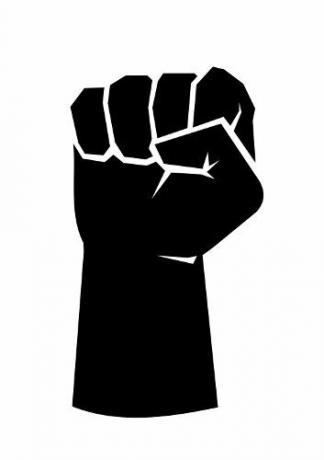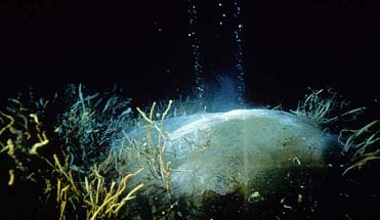You black Panthers they were a political party that emerged in the United States, in the 1960s, in the context of the struggle of the African-American population for their civil rights. Founded by black university students, it emerged as a movement of combating police violence against blacks in the United States and became a political party with a revolutionary project to combat inequality against African Americans.
Accessalso: Understand what racism is and how it manifests
It is important to say that this party defended the idea of armed self-defense as a way of fighting state violence against African-Americans and of a project self-managed, that is, the Afro-American community should be self-governing. Throughout their existence, they created a series of actions to benefit needy communities, but they were tough. pursued by the FBI (US Department of Justice police unit ), which led to its dissolution in the 1980s.
The Black Panthers were one of the groups that were part of the movements that defended the motto “
blackpower” (black power). The groups that shared this motto defended the self-determination of the black people. One of the symbols adopted by the Black Panthers in accordance with the “blackpower" was a fist raised.
Context
The Black Panthers emerged in the 1960s and were part of the African-American movements that claimed civil rights for this portion of the population. Until the 1960s, the blacks had no civil rights in a number of places, mainly in the southern United States, a region with a strong slave past and latent racism.
Thus, until the 1950s and 1960s, it was common in many parts of the United States for blacks to be unable to visit certain types of restaurants and stores. In addition, there were schools and universities that did not accept enrollments from black students. African Americans were still required to sit in the back of the bus and there were even drinking fountains from which blacks could not drink water.

All this prejudice caused the African-American population to live in a state of poverty very sharp and was the victim of a lot violencepoliceman. In response to all this, blacks began to mobilize and protest against racism across the country. Thus, movements began to emerge that advocated the idea of disobediencecivil to fight for improvements.
Big names emerged in this context, such as Martin Luther King Jr., a Baptist pastor known for advocating a nonviolent struggle against racism; and Malcolm X, member of an organization called Nation of Islam. Malcolm X defended black separatism and armed struggle as a form of resistance to racism.
Black Panther Foundation
![The Black Panther Party was created in 1966 by two black college students in Oakland, California.[1]](/f/6077b708ee46f545ad37346110819e40.jpg)
It was in this context of struggle and engagement of African Americans for civil rights that the Black Panther Party emerged. The founding of this party was a response from two black university students called HueyNewton and Bobbyseal against police violence. This is because police violence was one of the responses of whites in the United States against the engagement of blacks.
Historian Sean Purdy says that great authorities such as Presidents John F. Kennedy and Lyndon Johnson, offered little help to ensure the safety of black protests. The FBI tried to destabilize great leaders like Luther King, and the police used violence to quell the protests. Violence was even aimed at the elderly and children|1|.
So, in 1966, Newton and Seale, who were already involved with groups of revolutionary ideals, decided to found the Black Panther Party. The party was created in Oakland, California, and focused on combating police violence. Historian Wanderson Chaves states that the Black Panthers accompanied police operations, denounced racism and intimidated those accused of racism|2|.
Accessalso: Ku Klux Klan: terrorist group that was the great symbol of racism in the USA
Goals of the Black Panthers
In mid-1967, the Black Panthers released their "Ten Points Program." This program outlined all the goals espoused by the Black Panthers and had socialist inspiration. Wanderson Chaves indicates that the main ideological inspiration of the Black Panthers was the FrantzFanon, a black philosopher from Martinique. Other inspirations came from works written by Che Guevara, Karl Marx and Mao Tse-Tung|3|.
The Black Panthers program had the following points|4|:
WHAT WE WANT
We want freedom. We want power to determine the fate of our black community.
We want full employment for our people.
We want an end to the robbery of white capitalists against the black community.
We want decent houses to house human beings.
We want decent education for our people. An education that exposes the true nature of the decay of American society. We want to be taught our true history and our role in today's society.
We want all black men to be exempt from military service.
We want an immediate end to police brutality and murders of black people.
We want freedom for all blacks who are in federal, state, district and municipal prisons and jails.
We want all black people on trial to be judged by their peers or by people in their black communities as defined by the US Constitution.
We want land, bread, housing, education, clothing, justice and peace.
Within the program, there were also comments about each of the points. These comments expanded the thinking of the Black Panthers about the goals they sought to achieve. In general, and as mentioned, the Black Panthers were a party that sought the self-determination of the black people with the possibility of more equality of conditions, freedom and an end to the violence with which blacks were treated routinely.
Read too: Black Literature - literary production whose subject of writing is the black himself
Performance of the Black Panthers
Between 1966 and 1968, the Black Panther ideology spread across the United States, and a series of small cells sprang up across the country. That Popularity of Black Panthers it occurred mainly through the party's role in public actions for the benefit of the black community, but not only because of that.
The Black Panthers were also known for their clashes with the police from California. As police violence was very high against blacks, the Black Panthers accompanied armed police operations. At the time, people were allowed to carry weapons publicly, as long as they were not hidden and they were not held up to shoot.
In May 1967, for example, 30 members of the Black Panthers entered the City Council of Sacramento, capital of California, to take a stand against the bill to ban gun carrying in public places. The images of this event traveled the country and gave national projection to the Black Panthers.
At Social Actions of the Black Panthers intensified from 1968, mainly aimed at the black community. The central idea was to provide, free, servicespublic to which many blacks did not have access until then. Thus, the Black Panthers performed, for example, the distribution of food to children. In this program, about 20 thousand children received food of the Black Panthers between 1968 and 1969|1|.
The Black Panthers also founded community schools to welcome blacks and Latinos, the two majority groups in the poorest communities in the United States. In this community school, the Black Panthers created a teaching program that was tailored to the difficulties of each student. free hospital care to students who got sick, in addition to taking the children from their home to school and vice versa.
As a result of the dual role of the Black Panthers in confronting state violence – especially that practiced by the police – and in community programs, they even had five thousand members, linked in 34 committees spread across different locations in the United States|5|.
Despite the low membership, the influence of the Black Panthers in the United States was evident. Countless other groups that acted in defense of the Afro-American community were inspired by their work. A survey carried out in 1970, for example, found that 25% of African Americans supported the work done by the Black Panther Party|6|.
Also access: The importance of Black Consciousness Day in the fight against racism
government repression
The performance of the Black Panthers drew the attention of the US government and, therefore, the FBI was mobilized to fight the party. Thus, in 1967, the Black Panthers were included in the Cointelpro, a program created by the FBI in the 1950s to mobilize actions against social movements, especially those that had progressive political platforms.
With that, the FBI headed dozens of actions to weaken and demoralize the Black Panthers at the national level. Through this program, several party members were dead, trapped and slandered. The FBI also acted to divide the panthers through undercover agents.
The FBI's constant actions against the Black Panthers between 1967 and 1973 led the party to weakening. In addition, police violence against party members led to clashes, many police actions had disproportionate violence, and the balance was dozens of dead panthers. In 1973 alone, for example, 28 panthers were killed.
During this period, members of the Black Panthers also disagreed about the fate the party should take. This led to expelling many members, since the leader, Huey Newton, feared that the disagreements were caused by undercover FBI agents.
In 1973, party members tried to run for political office in Oakland and were defeated. Since then, they have been losing strength considerably, and their performance ended up focusing only regionally, in Oakland. THE FBI crackdown and Huey Newton's leadership problems ended up bringing the Black Panthers to their end in 1982.
Grades:
|1| PURDY, Sean. The American Century. In.: KARNAL, Leandro (ed.). History of the United States. São Paulo: Contexto, 2008, p. 243-249.
|2| CHAVES, Wanderson da Silva. The Black Panther Party. To access, click on here.
|3| Same as note 2.
|4| The Black Panther Party's Ten-Point Program. To access, click on here [in English].
|5| CARPINI, Michael X. Delli Black Panther Party: 1966-1982. To access, click on here [in English].
Image credits:
[1] Madison Muskopf and Shutterstock
By Daniel Neves
Graduated in History
Source: Brazil School - https://brasilescola.uol.com.br/historiag/os-panteras-negras-luta-racial-nos-eua.htm


